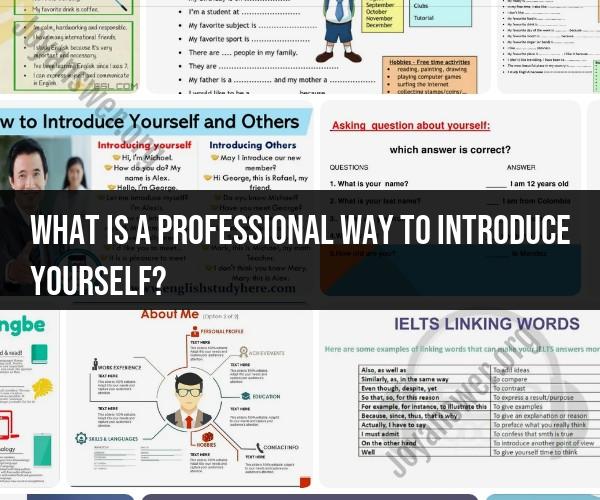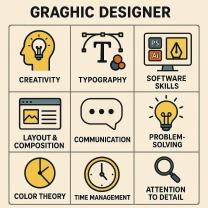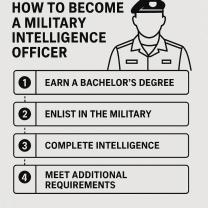What is a professional way to introduce yourself?
Introducing yourself in a professional manner is crucial for making a strong impression in various settings, including job interviews, networking events, and professional meetings. Here are some strategies for a professional self-introduction:
Start with a Greeting:
- Begin your introduction with a polite greeting. For example, "Good morning," "Good afternoon," or "Hello."
State Your Name:
- Clearly state your full name. This helps people remember you and associate your name with your face.
Provide Your Title and Affiliation:
- Mention your professional title and the organization you are associated with. For example, "I'm John Smith, and I'm a Senior Project Manager at XYZ Corporation."
Offer a Brief Professional Summary:
- Provide a concise summary of your professional background and expertise. Highlight key achievements or experiences that are relevant to the context. For example, "I have over 10 years of experience in marketing and have successfully led several product launches."
Express Enthusiasm:
- Show enthusiasm and positivity in your tone and body language. A warm smile and a friendly demeanor can go a long way in making a positive impression.
Tailor Your Introduction:
- Customize your introduction based on the situation and the people you are addressing. Highlight aspects of your background that are most relevant to the conversation.
Be Concise:
- Keep your introduction brief and to the point. Avoid overwhelming the listener with too much information. Aim for clarity and brevity.
Use Professional Language:
- Speak in a clear and professional manner. Avoid using slang or overly casual language, especially in formal settings.
Practice Your Introduction:
- Practice your self-introduction in advance, especially if you anticipate meeting new people in professional settings. This will help you deliver it confidently and without stumbling.
Engage in Active Listening:
- After introducing yourself, actively listen to the other person. Show interest in their response and be prepared to ask relevant questions or continue the conversation based on their input.
Follow Etiquette:
- Adhere to social and cultural norms of etiquette when introducing yourself. For example, in some cultures, it is customary to exchange business cards during introductions.
Maintain Eye Contact:
- When introducing yourself, maintain appropriate eye contact with the person you are addressing. It conveys confidence and attentiveness.
Practice Humility:
- While it's important to showcase your achievements, avoid coming across as overly boastful or arrogant. Be humble and open to learning from others.
End with a Pleasantry:
- Conclude your introduction with a pleasantry or a question to keep the conversation flowing. For example, "It's a pleasure to meet you," or "How has your day been?"
Follow Up:
- After the initial introduction, consider following up with a LinkedIn connection request or an email to express your interest in staying in touch.
Remember that a professional introduction sets the tone for your interactions and relationships in a professional context. It's an opportunity to make a positive and memorable impression, so make the most of it by being prepared, confident, and courteous.













